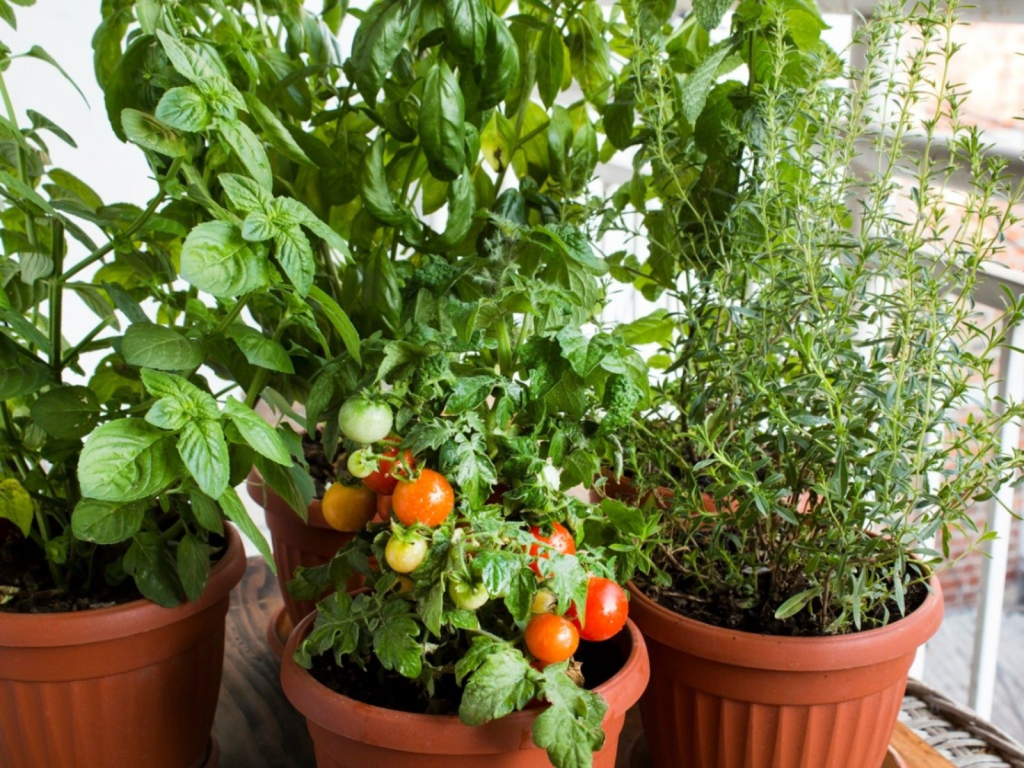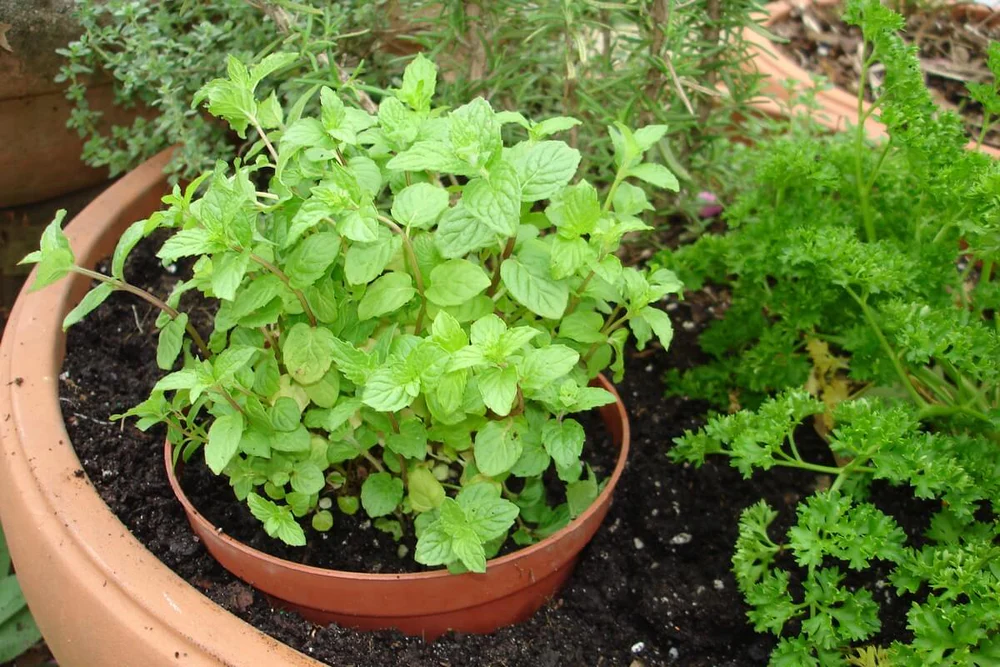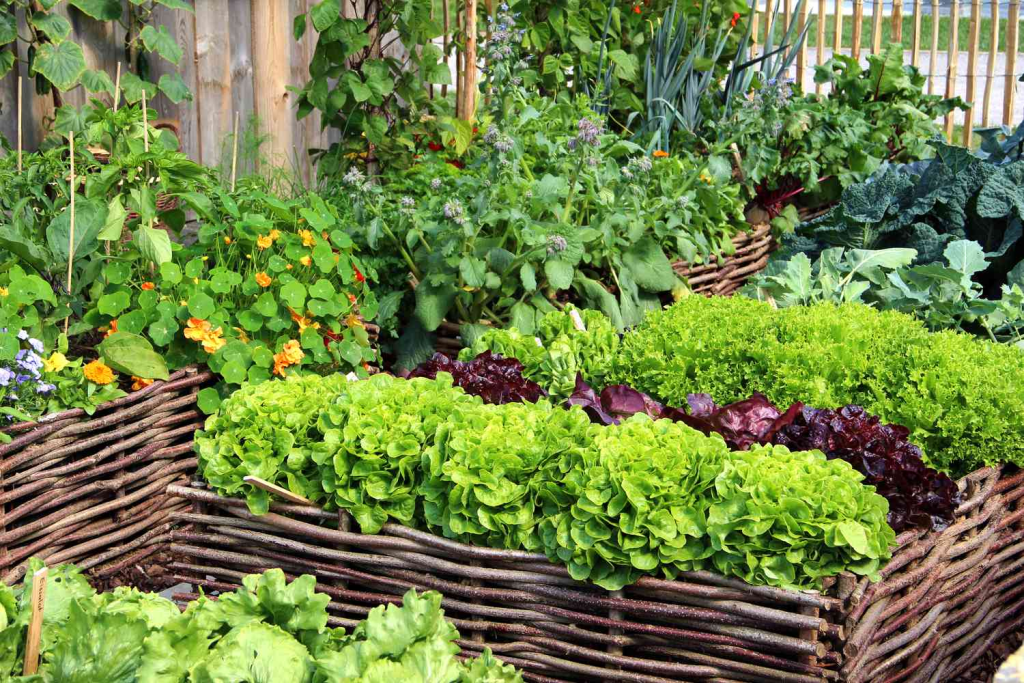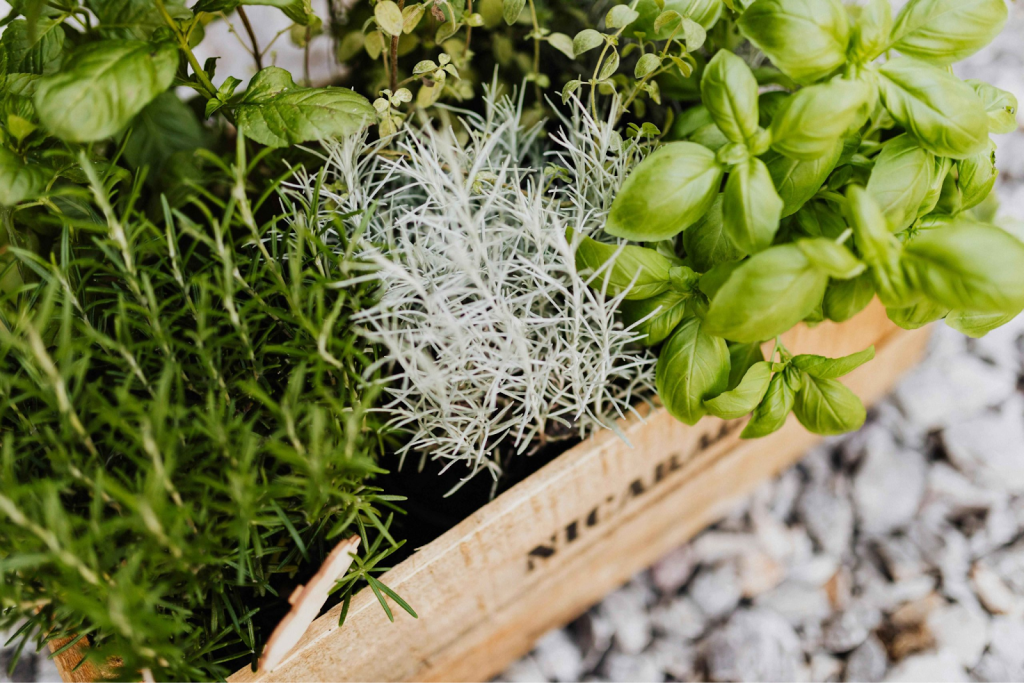
Companion herbs make vegetable beds tougher and easier to manage. We will show you different pairings that help to bring predators to aphids, enhance fruit set, and cut down the stress during hot spells. You will learn the benefits of proper basil-tomato placement, dill planted close to cucumbers, and thyme positioned along the edges. Let’s get started!
Herbs as Companion Plants in the Garden
Good herb pairings build a healthier bed that stays active throughout the season. Planting herbs as companion plants in the garden helps to provide nectar that supports lady beetles, lacewings, and hoverflies. Companion planting with herbs helps to introduce various scents and shapes that can make it a lot harder for pests to lock onto crops.
If you are interested in natural garden pest control, mix flowering dill, cilantro, basil, and parsley among vegetables. There are a few smart and helpful herb gardening tips you should keep in mind and they include using containers for mint, tucking low growers like thyme along edges, and allowing some stems to bloom for beneficials. 
Benefits of Using Herbs as Companion Plants

As beds mature, the benefits of companion planting include fewer pest flare-ups and sturdier leaves. Blooms that are open and nectar-rich help to attract pollinators naturally, which means that many crops will have a better fruit set.
Taproots and leafy mulch turn many favorites into herbs that helps to improve soil health, adding organic matter and cover. Targeted choices such as rosemary or thyme serve as pest-repelling herbs, making it harder for pests to home in.
Popular Herbs for Companion Planting
A compact herb strip can pull double duty all through the season. Some of the best herbs you can use for companion planting are basil, oregano, chives, rosemary, and sage. They are known to help with pest suppression and pollinator support. You can place basil companion plants close to tomatoes to discourage typical sap-suckers.
Keep oregano in the garden as a low, flowering groundcover that feeds the “good bugs.” You can plant chives for better pest control alongside lettuces to cut down on aphid build-up. With brassicas, rosemary are known to help to repel moths.
Planting Strategies: Best Pairings with Herbs
Results come from herb and vegetable pairings that reduce stress on both plants. Use basil and tomato garden tips such as interplanting to add scent that may lower thrips pressure on tomatoes.

Place dill close to cucumbers. Dill as a companion plant helps to invite predators such as lady beetles and hoverflies that can take care of aphids. 
Herbs That Deter Pests in the Garden
Fragrant herbs pull double duty in beds and containers, helping to keep common pests away. Plant rosemary for pest control near paths or patios. Its aromatic oils can deter common garden insects. Grow mint for natural pest control in containers. The scent bothers ants and flies, and peppermint oil near sheds is only a short-term mouse deterrent.

Some of the lavender garden benefits include a calming scent and fewer moths and mosquitoes. Catnip’s nepetalactone irritates mosquitoes and often draws cats, which can keep rodents away. Tuck in pest-repelling garden herbs by entry beds. 
Enhancing Soil Health with Companion Herbs
Legume-type nitrogen-fixing herbs such as fenugreek or clovers work together with rhizobia to incorporate usable nitrogen into the root zone. Those nodules contribute to the nitrogen that is available to plants and they help to improve soil fertility naturally while roots loosen tight soil for much better airflow.
Low mats of thyme or oregano behave like moisture retention plants, helping to shade the soil and reduce the rate of evaporation during hot spells.
How to Incorporate Herbs into Your Vegetable Garden

Herb rows slide into veggie beds with purpose. You can try interplanting herbs and vegetables by planting quick growers between slower crops to save space and allow for much better airflow.
Pots make it possible with container herb gardening, by allowing the use of real drainage and making it easier to match sun needs. Keep harvests coming with sequential planting methods, replanting right after a pull.
Seasonal Considerations for Planting Herbs
Cilantro, chives, dill, and parsley fit the best herbs for spring planting lane. Summer beds do well with some dependable herbs such as basil, oregano, thyme, rosemary, and sage.
Sage and oregano often ride out winter in-ground, while rosemary benefits from indoor protection within overwintering herbs. Many growers usually start basil, thyme, or parsley indoors by a sunny window to reduce the time it takes to achieve full garden growth.
Common Mistakes to Avoid in Herb Companion Planting

There are some common companion planting mistakes that hold herbs back and they include crowded beds and tangled roots. It is important that you give each plant the space they need.
You should also try to match sun and moisture since the light and water needs for herbs differ. Rosemary tends to prefer heat and drainage, while parsley prefers soil that is cooler and moist. To steer clear of herb garden errors, allow some stems to flower so that ladybugs and hoverflies have a reason to stick around. Group by sunlight and watering habits, space for mature size, and thin early.
Conclusion: Maximizing Your Garden with Companion Herbs
Healthy soil comes from simple, repeatable choices that work with plant biology. Low, spreading thyme or oregano work as living mulch that help to shade the surface, cut down on evaporation, and reduce crusting so that air can move through a lot easier.
Leguminous fenugreek assists in fixing nitrogen through rhizobial nodules that provide support to neighboring crops. Those wins make companion herbs for vegetables worth a shot. Edge paths with herbs for thriving garden results.
Try one herb pairing and share what made the biggest difference in the comments below!

